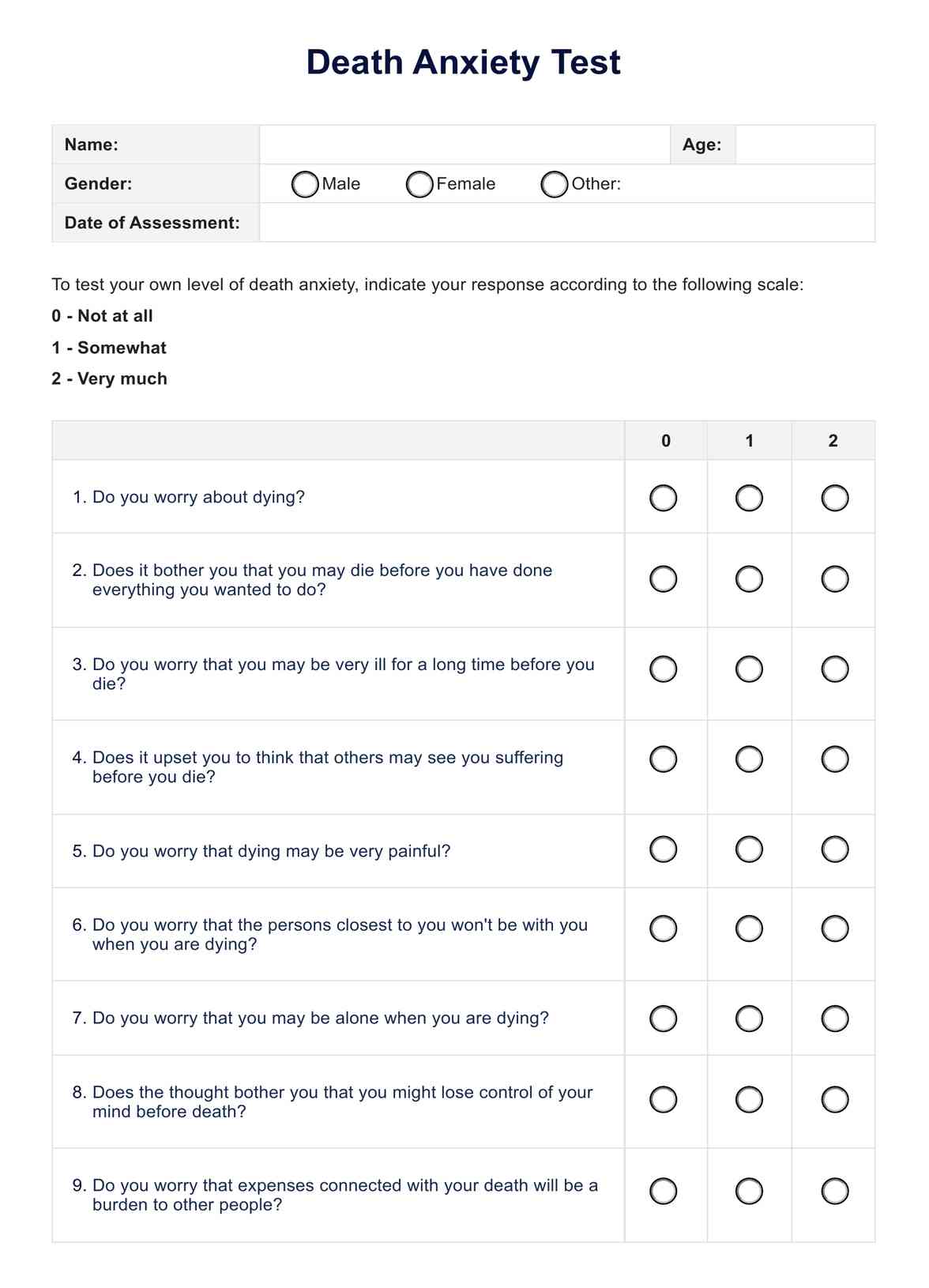Yes, it is fairly common. Most people experience some form of death anxiety at various points in their lives. However, the degree to which this anxiety is felt varies widely among individuals and across different cultures and religions.

Death Anxiety Test
Explore the Death Anxiety Test as a tool to gain an understanding of death anxiety among clients. Access a free PDF resource here.
Death Anxiety Test Template
Commonly asked questions
Death anxiety can be triggered by numerous factors, such as personal encounters with death, traumatic events, the process of aging, or even philosophical introspection. An individual's cultural, social, and religious background also plays a significant role in shaping their views about death and dying.
While it might initially seem daunting, discussing death can often actually help manage death anxiety. Rather than amplifying the fear, these conversations can lead to a better understanding and acceptance of its inevitability, and decrease the fear associated with the unknown.
EHR and practice management software
Get started for free
*No credit card required
Free
$0/usd
Unlimited clients
Telehealth
1GB of storage
Client portal text
Automated billing and online payments











